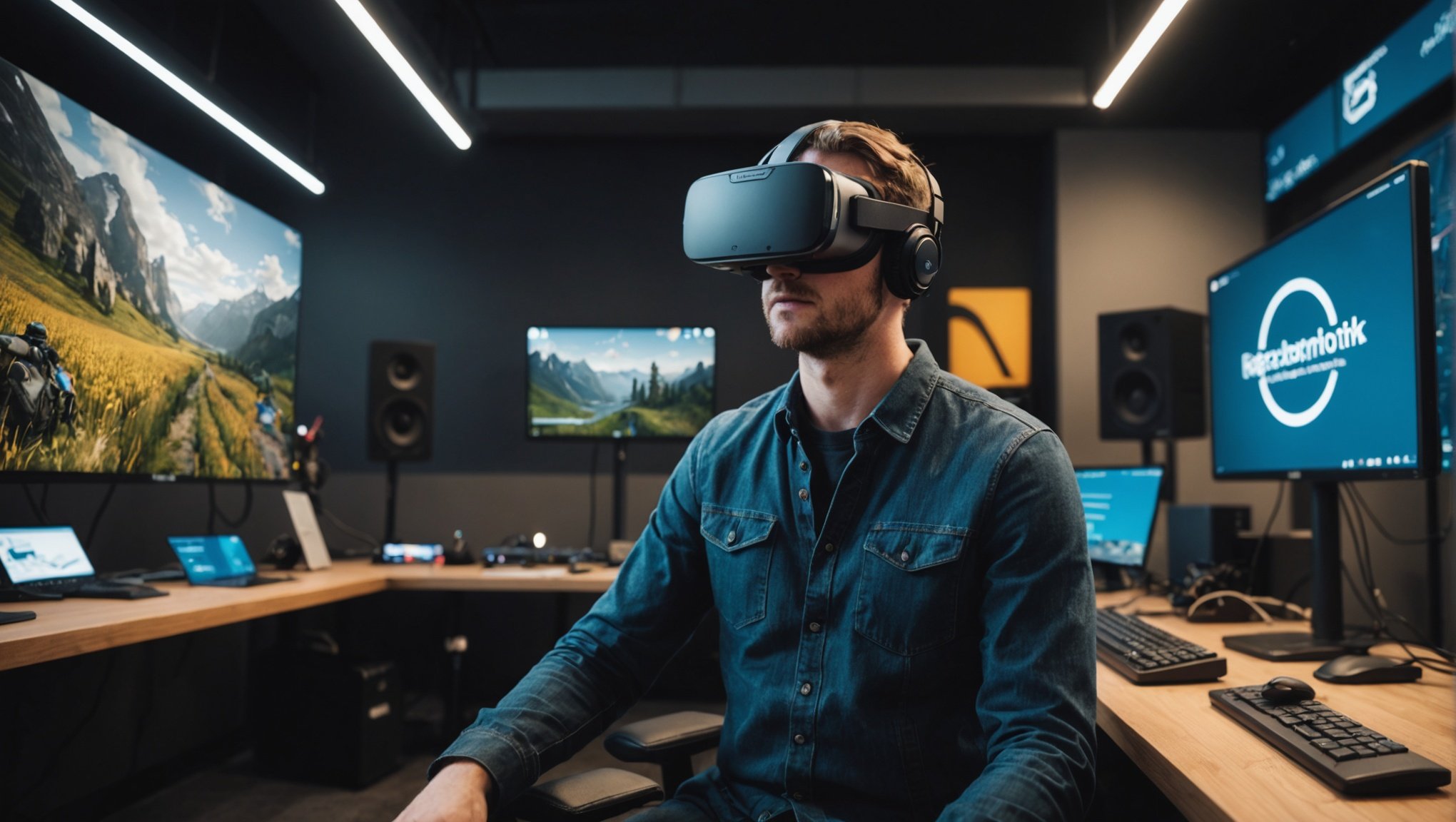Mastering Game Mode Transitions: A Developer’s Guide to Flawless VR Experiences
Understanding the Importance of Smooth Transitions in VR Games
When it comes to creating an immersive and engaging VR experience, one of the often-overlooked but crucial aspects is the transition between different game modes or scenes. These transitions can make or break the player’s immersion and overall satisfaction with the game. In this article, we will delve into the world of game mode transitions, exploring why they are vital, how to design them effectively, and what tools and techniques can help you achieve seamless transitions.
The Impact on Player Experience
Smooth transitions are essential for maintaining the player’s engagement and emotional investment in the game. Imagine playing a VR game where you are fully immersed in a thrilling adventure, only to be jarringly pulled out of the experience by a clumsy transition. This can disrupt the flow of the game and leave the player feeling frustrated.
Have you seen this : Unlocking Immersive Horror: A Developer”s Guide to Enhancing Gameplay with Binaural Audio
“Player feedback is the lifeblood of successful game development,” as emphasized in the Juego Studio blog. Feedback often highlights issues with transitions, underscoring their importance in the overall gaming experience.
Designing Effective Transitions
Designing effective transitions involves several key considerations, from the technical aspects to the artistic and user experience (UX) elements.
Additional reading : Mastering Microgravity: Tips for Developers to Create Realistic Space Adventure Game Simulations
Technical Considerations
From a technical standpoint, transitions involve managing resources efficiently to avoid lag, glitches, or other performance issues. Here are some technical considerations:
-
Resource Management: Ensure that the game engine is optimized to handle the transition without significant drops in framerate or other performance issues. Tools like Unity and Cocos Creator provide robust resource management features that can help in this regard.
-
Loading Times: Minimize loading times by using asynchronous loading techniques. This allows the game to load the next scene or mode in the background while the player is still engaged in the current one.
-
Scene Management: Proper scene management is crucial. This includes techniques such as scene streaming, where parts of the scene are loaded dynamically as the player moves through the environment.
Artistic and UX Elements
Beyond the technical, the artistic and UX elements of transitions are equally important.
-
Visual Continuity: Maintain visual continuity by ensuring that the transition does not disrupt the player’s visual flow. This can be achieved through the use of fade-ins, fade-outs, or other visual effects that smoothly transition between scenes.
-
Audio Consistency: Audio consistency is also vital. Ensure that the audio transitions smoothly from one scene to the next, maintaining the immersive atmosphere of the game.
-
Player Guidance: Guide the player through the transition with subtle cues. For example, a brief message or a visual indicator can help the player understand what is happening and what to expect next.
Tools and Techniques for Seamless Transitions
Several tools and techniques can help developers achieve seamless transitions in VR games.
Game Engines
Game engines like Unity and Cocos Creator offer a range of features that can facilitate smooth transitions.
| Feature | Unity | Cocos Creator |
|---|---|---|
| Scene Management | Supports asynchronous scene loading and scene streaming | Offers dynamic scene loading and unloading capabilities |
| Resource Management | Provides robust resource management tools to optimize performance | Includes efficient resource management to minimize loading times |
| Visual Effects | Offers a wide range of visual effects for smooth transitions | Supports various visual effects like fade-ins, fade-outs, and more |
| Scripting | Uses C# for scripting, allowing for complex transition logic | Uses Typescript, facilitating the creation of custom components for transitions |
Custom Components and Scripts
Developers can create custom components and scripts to handle transitions. For example, in Cocos Creator, you can write a custom component using Typescript to manage the transition logic.
@ccclass('TransitionController')
export class TransitionController extends Component {
start() {
// Initialize transition logic here
}
onTransitionStart() {
// Code to start the transition
}
onTransitionEnd() {
// Code to end the transition
}
}
Real-World Examples
Let’s look at a real-world example to illustrate how these techniques can be applied. In a VR adventure game, the player might transition from an exploration mode to a combat mode. Here’s how you could handle this transition smoothly:
- Visual Cue: As the player approaches the combat area, a visual cue such as a flashing light or a change in lighting could signal the upcoming transition.
- Audio Transition: The audio could gradually shift from an exploratory theme to a more intense combat theme.
- Loading Scene: The combat scene could be loaded asynchronously in the background while the player is still in the exploration mode.
- Player Guidance: A brief message or a visual indicator could inform the player that they are entering combat mode.
Best Practices for Transition Design
Here are some best practices to keep in mind when designing transitions:
Plan Ahead
- Storyboarding: Create a detailed storyboard of your game, including all transitions. This helps in visualizing the flow of the game and identifying potential issues early on.
Test Thoroughly
- Game Testing: Test your transitions extensively to ensure they are smooth and do not disrupt the player’s experience. Gather feedback from players and make necessary adjustments.
Optimize Performance
- Performance Optimization: Optimize your game for performance, ensuring that transitions do not cause significant drops in framerate or other performance issues.
Maintain Consistency
- Consistent Design: Maintain consistent design elements throughout the game, including transitions. This helps in creating a cohesive and immersive experience.
Mastering game mode transitions is a critical aspect of creating a flawless VR experience. By understanding the importance of smooth transitions, designing them effectively, and utilizing the right tools and techniques, developers can ensure that their games are engaging, immersive, and satisfying for players.
As Gene Feldman, a leading VR/AR integration expert, emphasizes, “Immersive training solutions and functional use case implementation require careful attention to detail, including how transitions are handled”.
In the ever-evolving games industry, staying ahead of the curve means continuously improving and refining every aspect of game development, including transitions. By following the best practices and leveraging the latest tools and technologies, developers can create VR experiences that leave a lasting impact on players.
Practical Insights and Actionable Advice
Here are some practical insights and actionable advice for developers working on VR games:
- Study Successful Games: Analyze successful VR games to see how they handle transitions. Understand what works well and what doesn’t.
- Collaborate with Your Team: Work closely with your team, including designers, artists, and testers, to ensure that transitions are smooth and immersive.
- Keep Learning: Stay updated with the latest trends and technologies in VR game development. Attend workshops, read industry blogs, and participate in forums to continuously improve your skills.
- User Feedback: Always gather and respond to user feedback. This is crucial for identifying and fixing issues with transitions and other aspects of the game.
By following these tips and best practices, you can create VR games that offer flawless transitions, enhancing the overall player experience and setting your game apart in the competitive games industry.











